Glock 43 Gen 4
$769.00 Original price was: $769.00.$650.00Current price is: $650.00.
- MFR#: UI4350204
- UPC: 860004686361
- CALIBER: 9mm
- MAGAZINE CAPACITY: 6 rounds
- # OF MAGS: Two
- TYPE: Semi Auto Pistol
- BARREL LENGTH: 3.39″
- SIGHTS: Fixed Sights
- FRAME MATERIAL: Polymer
Glock 43 Gen 4|Glock 43 for sale |G43 Price
Glock 43 Gen 4 is a six-round, 9mm slimline subcompact pistol released in mid-2015. It is the ideal concealed carry handgun and is extremely popular among law enforcement officers for backup and off-duty use.
The Glock 43 Gen 4 is a slimline, single stack, subcompact pistol chambered in 9mm that has been engineered to withstand the rigors of concealed carry and daily training. Made in the United States of America, the G43 is the smallest 9mm GLOCK ever introduced, making it an ideal backup or concealment gun for both civilians and law enforcement.
6.26 inches in length
1.02 inch width
Magazine Weight Unloaded: 17.95 oz. Capacity: 6 rounds, 9mm
Weight When Fully Loaded: 20.60 oz.
We can and will customize and install parts at no additional cost, and will ship the gun fully assembled and ready to shoot. Simply add the components to your shopping cart and leave a note in the comments section with any additional information or special requests.
The already legendary Glock 43 Gen 4 is a single stack GLOCK pistol chambered in 9 mm Luger. It is ultra-compact, precise, and an excellent tool for all shooters regardless of hand size. The grip incorporates a beaver tail design that enables the shooter to achieve a high and secure grip. The aggressive texture of the grip surface enables the pistol to be operated comfortably and reliably. The large magazine catch makes removing the six-round magazine a breeze. Engineered to the same exacting standards for which GLOCK is renowned, the small Glock 43 Gen 4 withstands the same torture tests as its larger brothers in the GLOCK pistol family.
Specifications
Caliber 9x19mm\s
System Capacity of the Safe Action® magazine
Normative: 6
6 Barrel Length Optional 86.5 mm | 3.41 inch
void of magazine 460 g | 16.23 oz
with a magazine that is empty 510 g | 17.99 oz
with a magazine loaded 20.64 oz | 585 g
Pull the Trigger N 24
Dimension
Overall Length** 159 mm | 6.26 inch
Length of Slide 154 mm | 6.06 inch
Overall Width 27 mm | 1.06 inch
22 mm | 0.87 inch slide width
Height with magnification 108 mm | 4.25 inch
133 mm | 5.24 inch 6 Line of Sight (Polymer)
132 mm | 5.20 inch Line of Sight (Steel) 131 mm | 5.16 inch Line of Sight (GNS)
Trigger Distancing Distance** 65 mm | 2.56 inch
Technical specifications are rounded and do not include tolerances – they are subject to change without notice! Subject to technical modifications
Glock 43 Review|Glock 43 Gen 4
We’re conducting a Glock 43 review. Glock’s response to the Smith and Wesson Shield was the Glock 43. Smith and Wesson’s Shield was the market’s first commercially successful single stack or stack and a half 9mm pistol. There had been previous firearms. As an example, consider the Kahr and Walther offerings. Due to the price point and niche marketing, those did not achieve the same level of success.
Glock sold one of the most popular handguns on the market prior to the Smith and Wesson Shield. The Glock 19 was widely regarded as an excellent concealed carry firearm.
It fired the legal 9mm cartridge while remaining small enough to conceal for the majority of people. While the Glock 19 was still large enough to serve as a duty handgun, it was not the most concealable firearm.
Glock desired a firearm that was truly designed for concealed carry. As a result, they introduced the Glock 42, a 380 single stack Glock nine millimeter pistol. The Glock 42 is an excellent firearm in and of itself. You can read more about it in our Glock 42 review, but it was still not a 9mm pistol and was significantly larger than the majority of other 380 pistols on the market. Glock enthusiasts were extremely disappointed. They hoped Glock would develop a firearm capable of competing with the Smith and Wesson Shield.
Glock made a wise decision by not releasing the Glock 42 in 9mm. That is, until the Glock 42 had been on the market long enough for a sufficient number of users to develop an attachment to it. Glock was able to sell two guns rather than one by delaying the release of the Glock 43 Gen 4.
That was an excellent business strategy on the part of Glock. When the Glock 43 Gen 4 was introduced, it was an instant success. It had no teething problems, as Glock designed the Glock 43 alongside the Glock 42. Thus, when they released the production version of the Glock 43, they addressed all of the Glock 42’s initial issues.
Size-Related Roles
The Glock 43 Gen 4 is a very compact handgun. It is not a full-sized gun that you will want to use for range practice or any type of overt duty. If you’re carrying this gun while on duty as a law enforcement officer, security guard, or something similar, it’s likely that this gun will serve as a backup weapon. Although it is not a primary weapon, it makes an excellent primary for concealed carry.
Concealed Carry Glock 43
The Glock 43 can be concealed carried in a variety of positions. You can carry IWB, appendix inside the waistband, or OWB. We’ll discuss the advantages and disadvantages of each carry position for the Glock 43.
Carry IWB
When we talk about IWB carry, we’re talking about the three to five o’clock position, or the nine to seven o’clock position for left-handed shooters. Appendix carry is also covered by IWB carry, but we’ll discuss that separately. Due to its slim profile, the Glock 43 Gen 4is ideal for IWB carry. Additionally, it has a very small footprint, which means it conceals extremely well.
One complaint you may not consider when carrying at the three to five o’clock position is the short muzzle. That is because the short barrel can frequently poke into your buttocks rather than sitting over them. If your rear section is flatter, this gun will be extremely comfortable. If you’re wearing a shorter t-shirt or button-down shirt, the shorter muzzle will indicate this. Whatever shirt you choose, a short muzzle is unlikely to poke you out the back of your pants the way a long gun might.
Carry the Appendix
Due to the Glock 43 Gen 4’s compact size, appendix carry is relatively simple. However, the length of the slide will become an issue in this case. This gun is extremely short, and if you’re carrying it in the appendix, you’ll want to be able to grip it completely from the holster. The gun will then be positioned very high in your belt line. Much of that weight will be carried above the belt. While the belt is tightening around the pistol’s bottom.
This means that a great deal of pressure will be applied to your groin. This occurs as a result of the slide pressing against your groin. This is due to the gun’s grip attempting to tip out away from the belt. A longer muzzle assists in mitigating this. If you’re carrying an appendix with a Glock 43 Gen 4, unless you’re carrying it at a very low ride height, with the gun’s grip resting directly on top of the belt. I would recommend a longer holster, such as one designed for the Glock 48.
Carry OWB
This is one of the better options if you are concealing a gun in the OWB position. When carrying OWB, the areas most likely to print are the gun’s overall thickness. This gun is extremely thin, and because it is worn outside of your pants, it does not sit as close to your body. And once again, gravity is working against you, attempting to pull the gun away from you.
Having an OWB holster in the pancake configuration is advantageous, as a thin holster is always preferable. It fits more snugly against the body, but a holster with adjustable cant is also highly recommended. As the G43 prints better with adjustable cant. As small as this gun is, it will conceal extremely well if your holster has only 15 degrees of built-in cant. At least for the majority of people with similar body types.
Features
The Glock 43 Gen 4 does not qualify as a high-capacity handgun due to its six-round flush fit capacity. When compared to other options on the market, such as the SIG P365, the Glock 43 Gen 4 appears to be lacking. When compared to the Springfield Armory Hellcat and the SIG P365. The pistol is extremely sleek and slim. It has a short grip and a plain slide. There are no serrations in the forward direction. This firearm is entirely designed to be carried in a carry-on. This firearm serves no other purpose. It is not a firearm designed for recreational use; rather, it is a standard carry gun.
Additionally, you can equip this firearm with an excellent set of sights. Glock standard over-molded polymer and steel line magazines are used for the magazines. Numerous companies manufacture aftermarket magazines for the Glock 43 Gen 4. Some of those even hold up to 15 rounds, though they will protrude significantly from the gun. There are numerous companies that manufacture concealed carry extensions for the Glock 43. This firearm can easily be upgraded with an additional three-round magazine. The most frequently used extension is plus two.
Grip/Ergonomics
Numerous people frequently express dissatisfaction with the ergonomics of the Glock. I do not believe that this is a firearm that the majority of those people will dislike. The grip has an excellent feel in the hand. There is no modularity in the form of backstraps or anything comparable. The grip is surprisingly comfortable in the hand. My primary criticism of this firearm’s grip is that it does not accommodate all three fingers. That is, unless you have extremely small hands. Your pinky is actually the strongest finger on your hand. Without the ability to place the pinky on the bottom, a lot of control over the firearm is lost. That is probably my primary criticism of the Glock 43 Gen 4, aside from its capacity.
Texturing
The Glock 43 Gen 4’s texturing is not particularly impressive. It’s tacky enough to give you some control, but not so much that you feel completely in charge. The moment your hands begin to sweat, the gun will undoubtedly want to move. The only way to truly increase the tackiness of the grip is to perform a custom stipple job. Additionally, you could add tape grips to the gun.
The majority of tape grips I’ve used (even when installed properly) wear out over time. Especially on a concealed carry firearm, where the grips are constantly in contact with your body heat. If you do that and then take the gun home and begin dry firing or practicing live fire, the grip begins to disintegrate fairly easily. The texturing will almost certainly not cause chafing or other discomfort if the gun is held close to your body. Unless you have extremely sensitive skin, it is nowhere near aggressive enough.
Review of the Glock 43 Sights
As is the case with the majority of Glocks, the Glock 43 Gen 4 comes standard with a variety of sight options. You can obtain it through the use of plastic slot fillers, which are the most prevalent. Alternatively, you can purchase AmeriGlo sights directly from the manufacturer. The factory-installed AmeriGlo sights are an incredible option. If you want to avoid having to add aftermarket sights in the future, that is definitely the route I would take.
The AmeriGlo sights feature an extremely bright front night sight surrounded by an orange ring that really pops in the daylight. AmeriGlow rear sights are your standard two-dot night vision system. However, the rear is completely blacked out and devoid of any white or colored rings. As a result, your entire focus can be on the firearm’s front side.
Aftermarket
Glock 43 Gen 4 aftermarket sights are not as prevalent as those for the Glock 19 and 17 series. There are still a plethora of options. It is cut similarly to the Glock 19 and 17. The majority of sights in the Glock 19 and 17 style are wider than the cut on the Glock 43. In theory, you could mount those sights. However, they will protrude slightly over the slide, which does not look good on the firearm.
Options with a red dot
There are no red dot options available for the Glock 43 at the moment. However, Glock recently released the Glock 43X MOS slide, which is compatible with the Glock 43. Additionally, there are companies that will custom mill your Glock 43 to accommodate a red dot. Hopefully, Glock will add a MOS option for the Glock 43 in the future. This is particularly true given that they already have the slide design for the 43X MOS.
Glock 43 Magazine Release Controls Review
Glock 42 vs 43|Glock 43 Gen 4
Glock 43 vs Glock 42
Comparing 15 Critical Considerations
As Glock’s reputation for quality and dependability grew, many handgun owners added them to their shortlist when shopping for new concealment pistols. Among their lineup, a frequently discussed point of contention is the Glock 42 vs 43.
How do the two single-stack, striker-fired subcompact pistols compare? As evidenced by the information provided below.
What Is the Distinction Between the G26 vs G43?
The size and caliber type distinction between the single-stack subcompact Glock 42 and Glock 43 carry pistols is obvious. The Glock 42 is a pistol chambered in.380 ACP that is slightly slimmer and shorter than the Glock 43 in 9mm.
At first glance, the distinctions between the two types of weapons may be overlooked. However, when comparing them side by side, you’ll notice that the sub-compact G43 has a longer barrel and a slightly longer overall length.
While both sub-compact weapons are lightweight due to their polymer frames, the G43 is slightly heavier than its smaller sibling.
Are There Parallels?
Following the successful launch of the subcompact G42 in 2014, another sibling, the Glock 43, followed shortly thereafter. However, prior to the introduction of the G43, the Glock 26 was the standard baby Glock. G26 is also nearly identical in size to G42.
As a result, the majority of Glock users will agree that both earned Glock’s reputation for reliability and high precision. Apart from a strong customer base, there is a massive supply of the best aftermarket accessories and after-purchase support—no doubt why these are popular enough options for civilians and even law enforcement personnel, both for indoor and outdoor use.
Given that both firearms are manufactured by the same reputable brand, you may notice a greater number of similarities than differences listed below:
Subcompacts with a single stack and fired by a striker
Made of a polymer frame, this chair is lightweight.
Magazine capacity of the Safe Action System
Carry-on ultra-compact
Glock 42 vs 43 Pricing Comparison
For some concealed carry owners, the G42.380 ACP may be significantly more expensive for a small.380 than other comparable Glocks.
However, based on experience, you still receive the best value for the specifications.
When comparing Glock 42 vs 43, the 9mm ammunition is slightly less expensive on average. However, even though the Glock 43 is our clear winner in the Glock 42 vs 43 comparison, both pistols have a manageable price range that won’t break the bank, especially when you consider their numerous barrel, grip, and magazine round features. You may also consider them cost-effective after giving them a try.
Ergonomics & Design
For some people who have purchased and extensively tested both pocket guns, it can be difficult to discern the precise difference in their grip feel when holding either weapon. However, some feel that the Glock 43 is more natural and comfortable in the hand, owing to its slightly thicker profile compared to the other self-defense pistol model. With this in mind, you may consider G43 to be a sufficient option in terms of stability.
However, if you have extremely large hands, you may want to consider using a magazine with a pinkie finger extension for added comfort and feel. However, both guns are ideal for smaller and slightly larger hand shooters. Regardless, Glock designed the 42 and 43 to accurately shoot targets within your range.
Ballistics of the G26 vs G43
According to our research, the majority of single-stack Glock pistol customers and enthusiasts have no issues ejecting, feeding, or firing the guns. Although G43 may be the more preferred one from a ballistic standpoint.
When loaded with 124-grain bullet ammo, the most common bullet weight for 9mm self-defense loads, the G43 pistol achieves an average velocity of 1168 feet per second. As a result, the muzzle energy is 376 foot-pounds. A G42 gun, on the other hand, has an average velocity of 976 FPS and muzzle energy of 190 ft-lbs when loaded with 90-grain bullet ammo.
Glock 43 is nearly twice the size of the G42.380 ACP.
Because muzzle energy is a rough indicator of a pistol’s destructive potential, the G43 has the ballistic advantage.
Accessories
Depending on your needs and preferences, you may want to consider adding the best Glock accessories to your G42 or Glock 43, such as a leather holster. For example, as previously stated, a pinky extension-equipped magazine may be required to shoot more accurately, particularly if you have large hands. Additionally, some owners of compact pistols prefer to replace the factory-supplied sights.
You have the option of purchasing the best aftermarket supply for both the concealed carry Glock 42 vs 43 pocket pistols. For example, from an alien gear IWB holster to non-slip grip extensions, you can expand your options with a single click at any time of day. As a result, a tie is required in this round.
Glock 42 recoil vs. Glock 43
The point is directed to G42 for recoil management. By and large, it has less recoil than the Glock 43.
It may be slightly more lively for a small and lightweight 9mm single-stack sub-compact pistol like the Glock 43, but some people find it sufficient to make a good shot even when it is not recoil-free.
Regardless of this distinction, others regard the Glock 43 as a pleasurable weapon to shoot.
Thus, even if you consider yourself to be recoil-sensitive, we recommend that you try both before making a choice. Furthermore, a felt recoil may not be identical to a measured one.
Dimensions & Weight
You’re probably aware at this point that the Glock 42.380 ACP pistol can easily win the size and weight category. A loaded magazine adds approximately five ounces to the weight of a G43. A portion of this weight difference can be attributed to the extended side length of the Glock 43 pistol.
Additionally, a G43 gun must be heavier and have a longer barrel to accommodate the larger, higher-pressure rounds. When compared side by side, G42’s body is noticeably slimmer. Additionally, it features a shorter barrel, grip, and overall length.
While you’re likely to prefer the G42 because it’s more portable and concealable, that does not mean the Glock 43 isn’t one of the best sub-compact concealed carry weapons as well.
Trigger Glock 42 vs 43
The G42 and 43, like the majority of the concealed carry Glock pistols, feature the same type of trigger. According to our research, the trigger pull appears to be one of the most frequently reported issues with Glock guns. Numerous concealed carry Glock pistol owners describe the factory trigger as squishy.
As a result, they seek out accessories at gun stores or seek out gunsmiths for trigger pull job enhancements. You may choose to do the same thing, depending on your preferences.
The G42 and Glock 43 pistols have a trigger distance of 2.40 inches and 2.56 inches, respectively. As a result, for shooters with large hands, the G43 provides more room for the finger to move from the resting position to the gun slide.
Safeguarding Your Glock Pistol
Glock firearms feature a Safe Action System, which allows customers to focus on shooting rather than worrying about disengaging and reengaging safeties. If you visit Glock’s website, you’ll notice how they tout the pistols’ trigger feel, firing pin, and drop safety features.
Both the G26 vs G43 pistols come equipped with a fully automatic safety system. Therefore, as long as you carry and handle them securely, as experts recommend, you shouldn’t have too many concerns.
Sights
Both pistols come equipped with the same type of factory-supplied sights. The standard Glock sights are made of plastic and feature a white dot in the center of a visual box. The majority of people choose to improve their vision because it does not work well for them.
Fortunately, you can upgrade to a variety of sights, including night sights, in the aftermarket if you believe it is necessary to improve your shooting.
Our research indicates that the G42 pistol sight sets are compatible with the Glock 43 pistol. That is potentially good news if you are considering purchasing both models.
Glock 42 vs 43 Cartridges
Given the weight of the G43 pistol, its rounds are larger and more powerful than the.380 ACP rounds used in the Glock 42. However, because a Glock 42.380 ACP pistol uses relatively low-pressure ammunition, it does not require the stiff spring system found on a single stack 9mm six-round pistol.
In terms of function, the majority of G42 and Glock 43 owners appear to have 100 percent magazine round reliability. Some report a few ammunition malfunctions, but they believe these are typically user-induced.
Glock 42 vs 43 Accuracy
Due to the small size of both subcompact pistols, you cannot expect to hit accurately beyond the typical self-defense range. When fired within 25 yards of a bench rest, the pistol’s accuracy is unmatched. Besides, with the right mag round, you can get some pretty decent shots.
According to various customer reviews, both pistols are a good match. Although the G43 may have advanced significantly with only minor differences.
Glock 42 vs 43 Magazine Capacity
The Glock 42 and 43 pistols come with a standard ammo capacity of 6+1, but if you feel this is insufficient, you can add a magazine release to make it more competitive in terms of ammo capacity. However, doing so will result in a reduction in the size and weight of your handgun. According to some users, bringing an additional magazine may also be an option.
Putting an End to Power
Mathematically, most pistol users and enthusiasts would recommend using Hatcher’s Relative Stopping Power Index when evaluating stopping power. Our research indicates that doing so would provide the Glock 43 with a 40%-45% stopping power advantage over the Glock 42.380 ACP, which only has a 30% stopping power.
Putting numbers aside, those who own a G42.380 ACP gun concur that
Putting numbers aside, those who carry a G42.380 ACP agree that it is less likely to stop an attacker than a 9mm. According to some, it may still have lethal stopping power for self-defense, but that also depends on your shooting ability.
Glock 42 Advantages and Disadvantages ADVANTAGES
Improved recoil control
When loaded, it is 4.77 oz lighter.
Gun is slightly slimmer and shorter.
Advantageous for those with smaller/weaker hands
Reduce the pressure round
CONS
A little more expensive than comparable calibres
Perhaps a pinky extension-equipped magazine is required.
Glock 43 Advantages and Disadvantages ADVANTAGES
Cheaper
Grip slightly thicker
Improved stopping power
Increased ballistic capability
In the hand, it feels more natural.
CONS
Recoil is slightly increased Heavier, slightly extended, and wider in size
Our Number One Recommendation is the Glock 43.
Both pistols are extremely concealable.
Accessories may be required for added comfort.
Glock 42 is shorter, lighter, and slimmer than the Glock 43.
The Glock 43 has superior stopping power and ballistic performance.
Glock 43 vs 26|Glock 43 Gen 4
The Glock 43 vs 26
Despite the fact that the Glock brand is one of the few pistol manufacturers without a long history in firearms manufacturing, the Glock brand is well-loved by many gun owners. If you’re considering adding a Glock to your collection or using one as your first weapon, you may be curious about the model differences.
In this article, we’ll compare the Glock 43 Gen 4 9mm pistol to its cousin, the Glock 26 gen 3.
The Glock 43 Gen 4: Advantages and Disadvantages
There is no such thing as a perfect handgun. What works for one proprietor may cause complications for another. Regardless of the intended use, each weapon has some distinct advantages and disadvantages.
The Advantages
Ideal for Summer and Tighter Fitting Clothing – No Printing!
The Glock 43 Gen 4 is extremely concealable, with an ergonomic grip that fits nearly any hand size. It is extremely lightweight and ergonomic. It’s dependable, comfortable, and comes with a large selection of aftermarket accessories.
The Negatives
The majority of negatives feature the G43’s center on the trigger. While the trigger is not superior or inferior to those found on other Glock models, it is heavy, and the trigger guard may cause discomfort to the operator’s middle finger. Additionally, while the grip is a good size for the majority of hands, owners with larger hands may encounter some difficulties with this weapon. Due to its diminutive size, the Glock 43 Gen 4 has a limited ammunition capacity.
The Glock 26: Advantages and Disadvantages
The Advantages
Both the advantages and disadvantages of the G26 emphasize the distinctions between these two handguns. The G26’s magazine capacity is ten, with the option of significantly expanding it. Field stripping the weapon is simple and quick, and it is ready to use right out of the box. The G26 is easily convertible for left- or right-handed operators and includes provisions for larger-handed users. As is the case with the majority of Glocks, the G26 is a reliable weapon.
The Negatives
The stock G26 grip has only two grooves. This may make it more difficult for some owners to hold the weapon, as there is little room for their pinky finger. Additionally, if you’re looking for a stylish firearm, this is not it. The G26 is a purpose-built weapon with an unassuming profile.
The Unavoidable Facts
Here is a direct comparison of these two handguns.
Price:
Glock 43 Gen 4: Prices begin around $700.00.
G26: Price ranges between $600.00 and $800.00 Weight:
Glock 43 Gen 4: 16.23 oz. unloaded / 20.64 oz. loaded
G26: 19.40 oz. empty / 25.75 oz. with magazine Capacity:
Glock 43 Gen 4: six as standard, six as an option
G26: 10 as standard, 12/17/19/15/24/31/33 as an option Barrel Length: 10 as standard, 12/17/19/15/24/31/33 as an option
3.41 inch G43
3.43 inch G26 Caliber:
9 x 19mm G43
9 x 19mm G26
Reviews
There are no reviews yet.
Related products
HANDGUNS
HANDGUNS
HANDGUNS
HANDGUNS
HANDGUNS
HANDGUNS




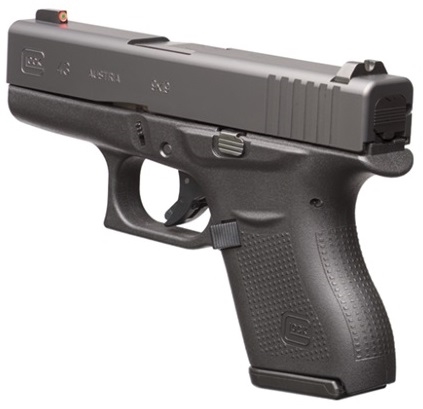

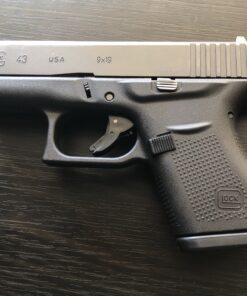
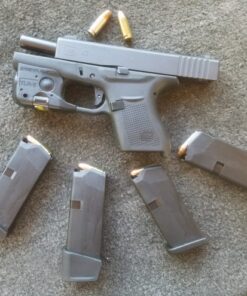
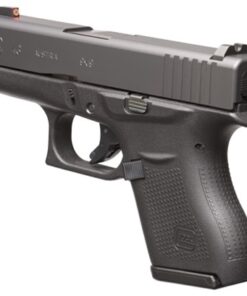


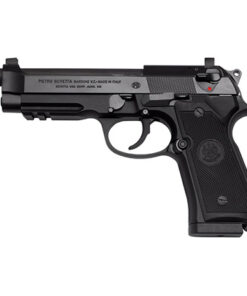

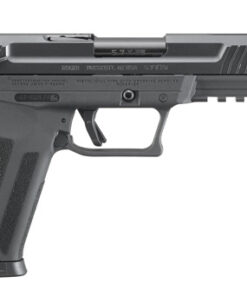
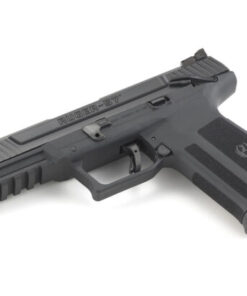
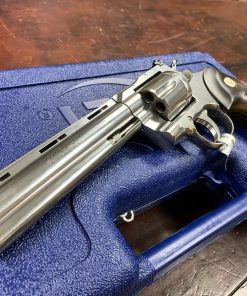

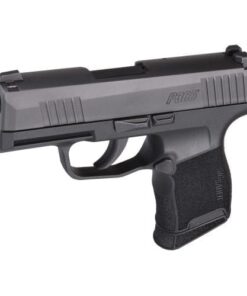
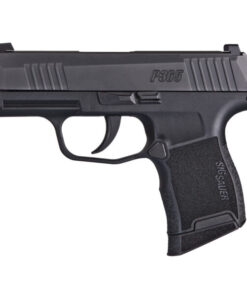
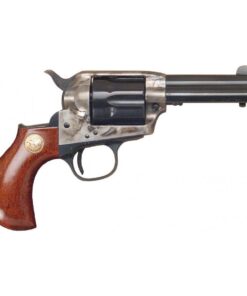





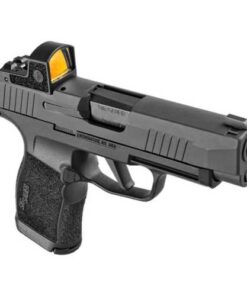

Be the first to review “Glock 43 Gen 4”